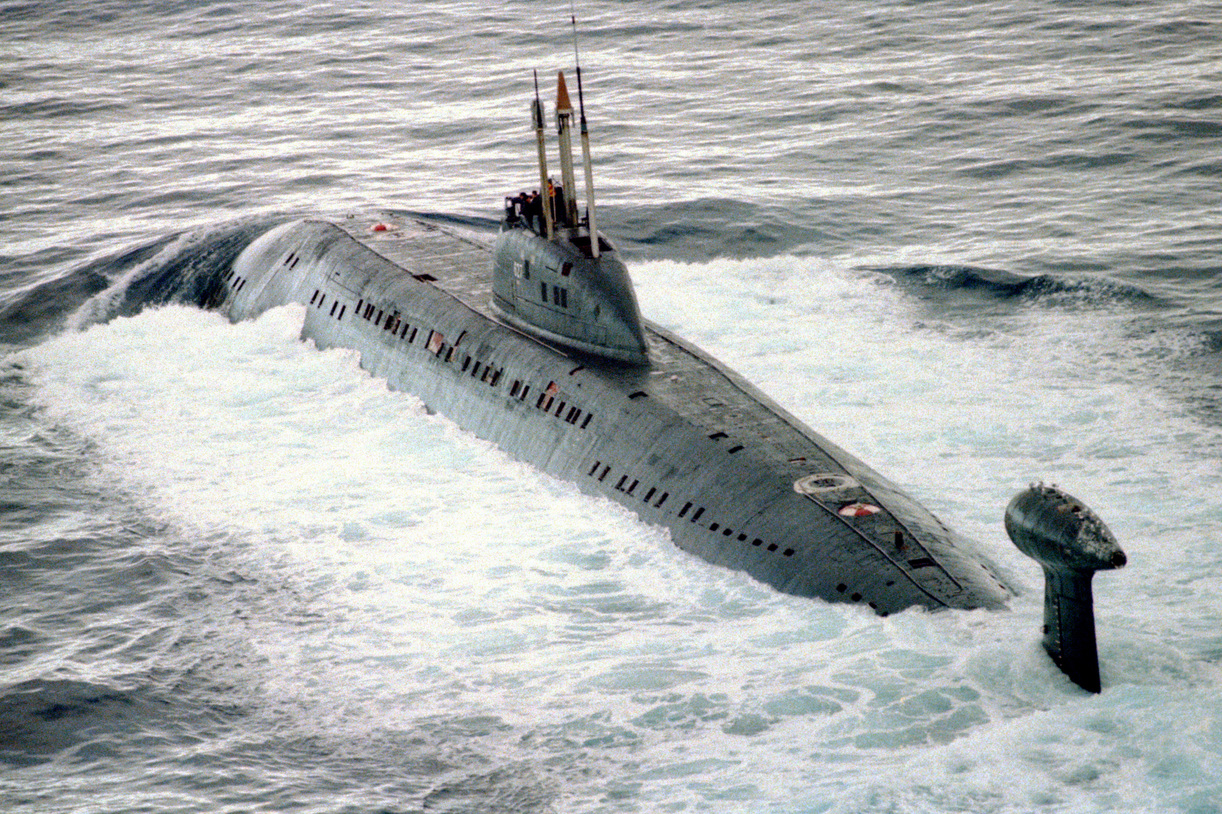Victor III: The Russian Submarine Built to Fight the U.S. Navy in a War
The Victor III-Class submarines were outfitted with "cluster-guard" anechoic coatings, which were used to decrease radiated noise levels.
The Soviet Victor III Class Submarine - In 1976, while the United States was celebrating its bicentennial, the Soviet Union launched the first of its Project 671RTM/RTMK Shchuka (pike) nuclear-powered submarines at the Admiralty Shipyard in Leningrad (now Sankt Petersburg). It was a further development of the previous Project 671RT Syomga, known in the West as the Victor II class.
The lead boat of the "Victor III class" was commissioned in 1979, the first of 26 boats that would be built until 1991.
As previously reported by Mark Episkopos for The National Interest, the Project 671 class of Soviet nuclear-powered attack submarines, better known by its North Atlantic Treaty Organization (NATO) reporting name Victor, posed an undisputed generational leap for Soviet anti-submarine warfare (ASW) capabilities, filling an important offensive and escort role in the Soviet Navy.
The upgraded and enhanced Victor II rounded out the submarine's weapons loadout and saw the introduction of new missiles designed to target large surface ships. Yet, the improved Victor II boats didn't address the most significant vulnerability of the Victor I – namely the acoustics gap that it had with its NATO attack submarine counterparts. The Kremlin opted to cut short the Victor II-class program and sought to address the stealth issue while providing greater capabilities.
The Victor III-Class submarines were outfitted with "cluster-guard" anechoic coatings, which were used to decrease radiated noise levels. In some U.S. Navy circles, the boats were equivalent to the USS Sturgeon-class SSN in quietness. The Soviet boats were also outfitted with bow hydroplanes that could retract into the hull at high underwater speeds or when on the surface.
These submarines, which are 107.2 meters long, can travel 30 knots when submerged.
In addition to being quieter and faster, the Victor III-class is equipped with two 650-millimeter and four 533-millimeter torpedo tubes, making it a multipurpose submarine fit for targeting larger surface vessels as well as ASW operations. The boats could carry a variety of weapons, including SS-N-21 or SS-N-15 missiles and Type 53 torpedoes for the smaller tubers, while the larger two tubes could launch SS-N-16 missiles and Type 65 torpedoes. In total, 24 tube-launched weapons or 36 mines could be carried on board.
Propulsion for the boats was provided by two VM-4T nuclear reactors driving a single steam turbine, which generated 22.7 MW of power. The boats had one shaft, and while initially a single propeller was used, later Victor III class boats were fitted with two propellers.
External Pod
The Victor III class boats also caught the attention of NATO intelligence due to the distinctive pod on the vertical stern-plane. Speculation immediately mounted that the pod was the housing for some sort of exotic silent propulsion system, possibly a magnetohydrodynamic drive unit.
However, another theory proposed that it was some sort of weapon system, but it was later determined that the pod was a hydrodynamic housing for a reelable towed passive sonar array.
Victor III Variant
A variant of the Project 671RTM was produced for the Soviet Navy as the Project 671RTMK, and it could carry two S-10 Granat (NATO reporting name SS-N-21 or Sampson) submarine-launched cruise missiles instead of torpedoes. The S-10 Granat was the Soviet equivalent of the UGM-109, the submarine-launched version of the Tomahawk.
The S-10 missiles had a range of 3,000 km and carried a nuclear warhead. These were launched via the 650 mm torpedo tubes. However, only five of the Project 671RTMK boats were built.
Lucky Subs
Though the Soviet Navy and later the Russian Navy haven't had the best track record in terms of submarine safety, no Victor III class boats were lost and there were reportedly no serious accidents.

As of 2023, twenty-four of the 26 boats of the class were retired – with only K-138 Obinsk and K-448 Tambov remaining in service, both with the Russian Navy's Northern Fleet. The former, launched in August 1989 and commissioned in late 1990, completed its overhaul in 2016; the latter was commissioned in 1992 and is reportedly in active service.
Author Experience and Expertise
Peter Suciu is a Michigan-based writer. He has contributed to more than four dozen magazines, newspapers, and websites with over 3,200 published pieces over a twenty-year career in journalism. He regularly writes about military hardware, firearms history, cybersecurity, politics, and international affairs. Peter is also a Contributing Writer for Forbes and Clearance Jobs. You can follow him on Twitter: @PeterSuciu.
All images are Creative Commons.


